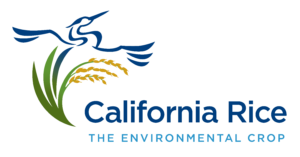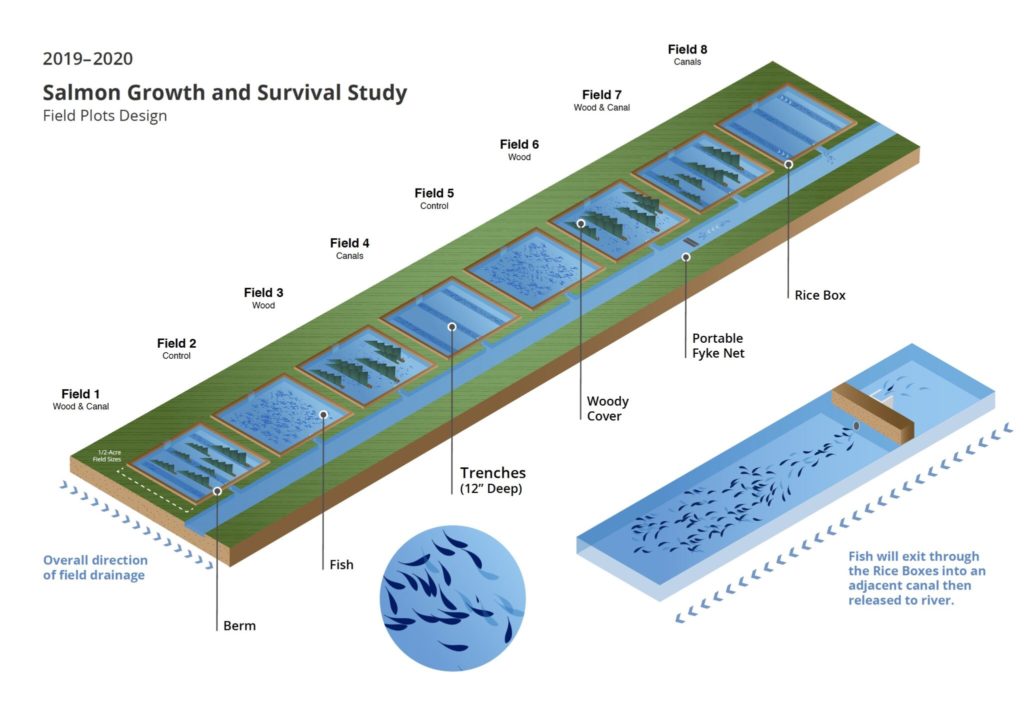Growing Together Winter 2021
Positive Results Shows Promise for CA Rice Commission Salmon Project
Agriculturalists have the grand challenge of producing food and fiber for our communities, both domestically and globally. And the responsibility to ensure the sustainability of the land and ecosystems that support the growth  of these products. This responsibility has been supported by the work of the California Rice Commission in a variety of projects over the past 15 years. From air quality to habitat management, the California Rice Commission has worked to fundraise and match investments to ensure research and implementation of sustainable practices for the California ecosystems.
of these products. This responsibility has been supported by the work of the California Rice Commission in a variety of projects over the past 15 years. From air quality to habitat management, the California Rice Commission has worked to fundraise and match investments to ensure research and implementation of sustainable practices for the California ecosystems.
Most recently, the project “Helping Salmon in the Sacramento Valley” was established to meet the plummeting salmon population caused by a variety of environmental changes, including recent droughts. Paul Buttner, Manager of Environmental Affairs for the California Rice Commission, comments, “The need for restoration for the salmon population in California has been apparent for years. Since they are a migratory species, they have to have the right conditions to move from the river into the flood plain to reproduce successfully. Many organizations are working on this initiative, but we are specifically working on reconnecting the flood plain and creating habitats for these salmon to thrive in rice fields located in the valley.” The project’s ultimate goal is to create a standard management practice, so eventually, rice growers can sign up to manage their fields in the wintertime in ways that enhance habitat values for salmon much like we have done for waterbirds for decades.
In the last year, the Commission, working closely with UC Davis and NRCS, found great success in their trials. They evaluated four main types of habitats (pictured below): regularly managed rice fields, deep channels, woody cover, and both deep channels and woody cover. There were approximately 1000 salmon per plot (8 total) with a control group of salmon housed at the UC Davis hatchery for comparison. There were also nearly 1000 salmon with specialized telemetry tags that allowed researchers to track the salmon throughout their journey to the river. This was the most expensive part of the research project but offered significant insight into the salmon’s journey and provided substantial results.

The findings of their research concluded there was no significant difference between the four field treatments in terms of the survivability of fish. In each of the eight plots, there were 1000 salmon per plot with a control group housed at the UC Davis hatchery. The rice field salmon grew much faster and were able to be released mid-March versus the control fish in mid-May. The telemetry fish tracking data showed that 4.5% of the salmon from the rice fields made it to the river compared to just 1% of the control salmon that were raised in the control hatchery. This very promising data from the trials will soon be pushed to a larger scale in the next research seasons to test if the success found can be scaled into full-sized, working rice fields with more salmon and hopefully including state and federal agencies’ involvement to help monitor implementation. “It is anticipated that three years from now, we could have a fully implemented program. The Rice Commission would promote it heavily and would work closely with growers to integrate them into the program,” shares Paul Buttner.
We at Grow West are proud to be a part of a funding coalition to support this work. To learn more about this program and ways you can support the effort, please visit http://salmon.calrice.org/ or contact Paul Buttner personally at pbuttner@calrice.org.
Buttner also directs the operations of a philanthropic wildlife habitat organization, called the California Ricelands Waterbird Foundation, where institutions and individuals can make tax-deductible donations that are very efficiently deployed into habitat projects in the Sacramento Valley. Please visit https://calricewaterbirds.org to learn more about how you can help our wildlife.
Photography by California Rice Commission
